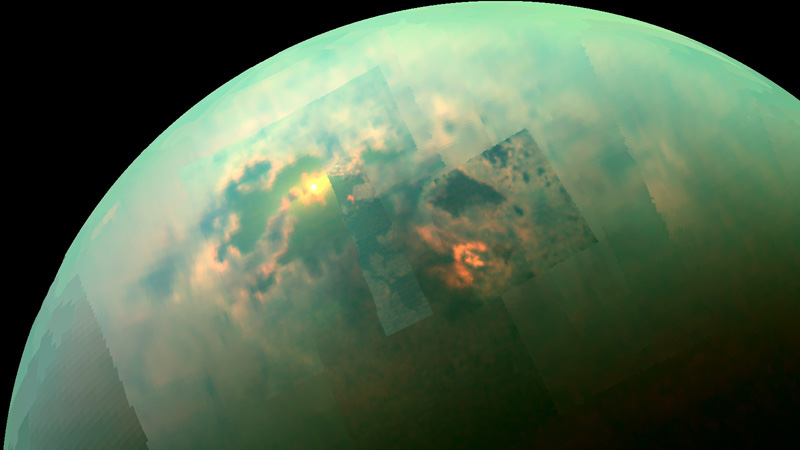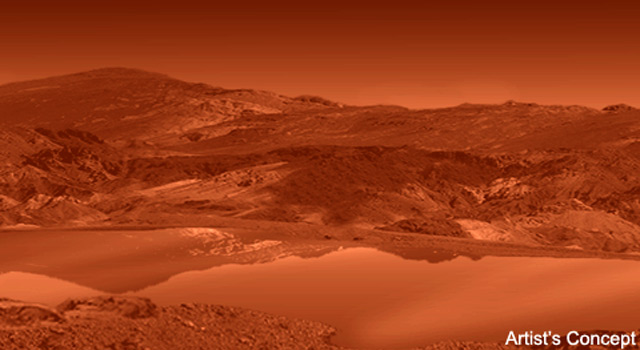
Ten years after arriving at Saturn, NASA’s Cassini spacecraft is still able to send us delightful surprises from a billion miles away. Most recently, it cruised by the large moon Titan and caught a flash of sunlight reflecting off the liquid surface of one of the moon’s hydrocarbon seas, Kraken Mare.
Kraken Mare is the largest sea on Titan, part of a complex of seas in Titan’s North Polar Region. The bright reflection, seen in the upper left side of the image, comes from the southern region of Kraken Mare, just north of an island archipelago that separates two sections of the sea. In the past, Cassini has captured separate images of the polar seas and of sunlight glinting off them, but the picture from the August flyby is the first to show us both at the same time.
On this occasion, the sun brought more to light than just the liquid surface of Kraken Mare. The southern rim of the sea was shown to have a “bathtub ring”—a coastal outline of bright material likely left behind by evaporating liquid and a declining sea level, indicating that Kraken Mare was once deeper. Similar evaporative deposits are left behind by receding lakes on Earth, such as in the case of desert salt pans.
Another indicator of Titan’s lively atmosphere can be found in the snapshot. The bright, arrow-like shape to the right is a cloud formation of liquid methane droplets. Methane may even be precipitating from these clouds onto the sea it stretches over in the picture, Ligeia Mare—something has to be filling those basins.
